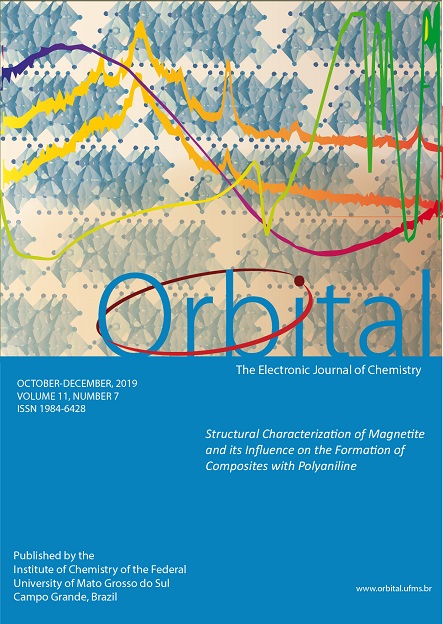Structural Characterization of Magnetite and its Influence on the Formation of Composites with Polyaniline
- conducting polymer,
- hybrid materials,
- iron oxide,
- metal oxide,
- Rietveld analysis
Copyright (c) 2019 Orbital: The Electronic Journal of Chemistry

This work is licensed under a Creative Commons Attribution-NonCommercial-NoDerivatives 4.0 International License.
Abstract
In this paper, we present a simple and inexpensive method for synthesizing conductive polyaniline and magnetite composites. Firstly, the magnetite was synthesized by precipitation in basic medium from FeCl3, and the Rietveld refinement confirmed the spinel structure. Different amounts of magnetite were used in the in situ synthesis of Pani-Fe3O4 composites to determine the influence, resulting in the following materials: Pani-Fe3O4 (1) with 0.06 g and Pani-Fe3O4 (2) with 0.24 g. The x-ray diffractogram demonstrates that interaction occurs between the polyaniline chains and the magnetite particles in the composites. Infrared and ultraviolet-visible vibrational spectra indicate that the composites are in the state of oxidation polyaniline salt emerald, which is the conductive form of greatest interest. Scanning electron microscopy images show that composites have particles with no definite geometry in the form of clusters, and the best homogeneity was achieved in the composite with the highest amount of magnetite. Evidence indicates that Pani-Fe3O4 (2) material with 0.24 g of magnetite to be incorporated in polyaniline synthesis may have more technologically interesting properties, but further studies will be needed for confirmation.

